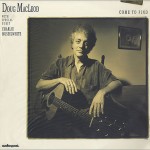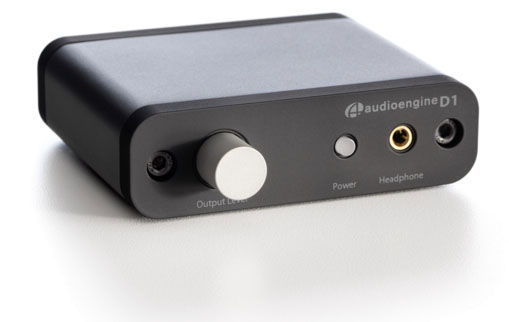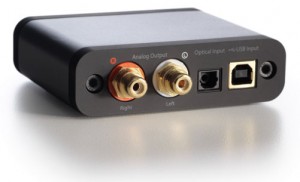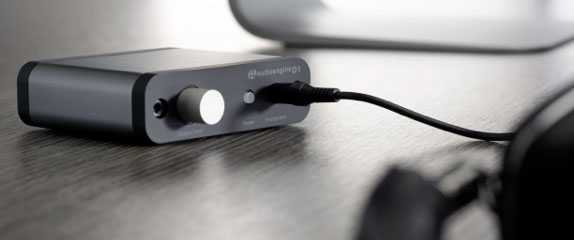How quickly do things change? Just a couple of years ago a headphone enthusiast could count the number of headphone DACs in a handful of seconds. Now, in the early months of 2012 the list is significantly larger and growing with each passing day.
Specifications:
DAC type: Dual Mode USB and Optical (SPDIF)
Inputs: USB/Optical (SPDIF)
Outputs: RCA stereo/3.5mm headphone
D/A converter: AKM4396
Optical receiver: CS8416
USB controller: TI1020B
USB: Type 1.1 or above
Full-scale output: 2.0V RMS (RCA and Headphone)
Output impedance: 47 ohms RCA, 10 ohms headphone
Power source: USB 5V
Power requirements: 200mA
USB power filtering: 2-stage redundant regulation
SNR: >110db
THD+N: <0.002%
Crosstalk: <-85db
Frequency response: 10Hz – 25KHz +/- 0.5db
Input bit depth: up to 24 bits
Input data rate: up to 192kpbs (optical), 96kpbs (USB)
Product dimensions: 3.5” x 4” x 1″ Shipping weight: 1.0lbs (0.5kg)
Included accessories:
- USB cable, 26
- Setup Guide
- Microfiber bag
Enter into the market Audioengine, a well-respected member of the desktop/home office segment of the market. Since the company’s founding in 2002, Affordable$$Audio, along with countless other audio publications, have lavished well-earned high praise for every product they’ve brought to the public. From the A5 powered speakers in 2005 and way cool A-W2 wireless iPod transmitter, to the stealthily impressive N22 amplifier, Audioengine consistently delivers quality and value. When I heard that they had quietly launched the D1 DAC at last year’s RMAF, I knew it was time to experience an Audioengine review for myself.
One of the hallmarks to Audioengine’s success is their build quality-beginning with the rounded sides of the case, consistent with other AW products, and homage to the Apple-inspired past in one of the founders. The D1 is about the size of a tri-fold wallet with the body shell painted in a metallic grey. The gauge of metal is thicker than other small audio pieces in the budget category. Each end is a cap finished in a flat anodized black though it feels a bit like suede. Two recessed hex nuts secure both front and back to the cover. A nice bit of ergonomic design is the thin full-width rail foot on the bottom of each cap instead four rubber feet. The overall feel is one of solid one-piece construction and he6. A microfiber bag is included for traveling along with a USB cable.
The front cap has room for the silver volume knob (surprisingly not the same color as the cylinder), and much like the N22 Amp, no notch for the volume position. A white LED notes whether power is on. The mini-headphone jack has a nice tight snap. The back cap holds a single set of gold RCA output jacks as well as both an optical and USB input.
Like other DACs, the D1 installs into the computer-based audio system in just seconds, whether Macintosh or Windows-based. The D1 will accept optical input up to 24/192k and 96k with USB, respectively. Signal to noise ratio is stated to be 110db, a number that just a few years ago was the domain of more expensive genres.
Listening Audioengine D1
I did all of my listening using an Apple MacBook without the power cord being engaged to eliminate as much outside noise as possible. Much like the average D1 user I chose to use the half-meter USB cable provided by Audioengine. For headphones, most of my listening was done with the Sennheiser HD650, though I did spend a little time listening with an older budget pair of HD422s as well as the Skull Candy 50/50 in-ear phones.
 One of the aspects of (all) headphone listening that must be taken into account is that it is a different aural experience than from speakers. For a few days prior to beginning the review I listened solely via headphones. With every selection I listening both directly from the laptop and with the D1. I began by selecting Doug Macleod’s Come To find, foreshadowing what became an obvious characteristic of the D1, a bigger and deeper soundstage. The harmonica was clearer. Bass strings were deeper with greater detail in “Bring it on Home.” Slight string loose vibration was distinct rather than fuzzy without the D1.
One of the aspects of (all) headphone listening that must be taken into account is that it is a different aural experience than from speakers. For a few days prior to beginning the review I listened solely via headphones. With every selection I listening both directly from the laptop and with the D1. I began by selecting Doug Macleod’s Come To find, foreshadowing what became an obvious characteristic of the D1, a bigger and deeper soundstage. The harmonica was clearer. Bass strings were deeper with greater detail in “Bring it on Home.” Slight string loose vibration was distinct rather than fuzzy without the D1.
In the track “Since I Le6 St Louis,” a light tapping of a digit against the guitar (during the chorus) is clearly evident, but went missing without the D1 in the loop.
Switching over to the Flaming Lips’ At War with the Mystics, it contains lots of buzzy synthesizers against Prince-style talk-vocal in the track “Free Radicals.” Never had I been able to tolerate this song with DAC-free headphone gear. As a matter-of-fact, I historically avoided it altogether with the cans on. For the first time I could listen with headphone gear as the D1 was able bring out the true sound instead of fuzzy mush. Unfortunately, I was unable to say the same for the flawed “Sound of Failure,” as the distortion, whether artistic or mastered in, personally brutalized my auditory senses.
Recently, I’ve rediscovered my enjoyment of Grateful Dead and Terrapin Station in particular. I’ve always enjoyed the percussion in this recording. The D1 in particular presents tighter drums in “Sampson and Delilah.” The tom hits are placed off-center giving them a higher pitch. Listening to “Trucking,” the bass is surrounding. The high-hat hits are distinct sounds with space to themselves. The percussion is a part of the rarely used trot-style drumming with strokes coming half way between the head’s edge and center.
Changing genres once again, in the Indigo Girls’ harmonies in Strange fire, the D1 wonderfully delineated Amy Ray’s and Emily Sailiers’ unique voices in the Otle track, all the while showing how well they blend. During all my listening I can think of no better example of the difference the D1 makes than hearing the background flute in “Crazy Game” during the chorus. Without the D1, the flute is all but non-existent when straight from MacBook’s headphone out.
I would be remiss if I didn’t plug the DAC1 into my home system; taking out the PS Audio Digital Link III and inserting the DAC1 along with the MacBook. Without question the DAC1 did well for itself. All the basics of a good DAC were present, the limitations minor. There was more grain than with the PS Audio and the D1’s resolution was a bit lacking in comparison. Nevertheless, in a pinch, I wouldn’t think twice about placing the Audioengine into the system if necessity required.
During the review period I had to spend some Ome out-of-town at a job site. Knowing that a clock radio was the only “audio” source furnished at my accommodations, I borrowed Audioengine’s N22 amplifier and P4 speakers from A$$A’s founder. The setup easily fit into an overnight suitcase.
Within minutes of unpacking, I had a fine small system to keep me company as I poured over various reports and permits. Most impressive was the fullness and quality of sound at the requisite reasonable volumes. I have no doubt this situation was envisioned with Audioengine’s brain trust.
Final Thoughts about Audioengine D1
If there is anything that an engineer appreciates, it is good, quality execution and the Audioengine’s D1 DAC has it in spades. From the solid feel to the smooth edges along with the most important aspect, the sound output, the D1 is another Audioengine winner. Less expensive portable DAC’s can be found on eBay, but none with the construction, finish quality and pedigree of the D1. For a USB-only powered budget DAC, consider the Audioengine’s D1 a top-tier contender.
By Dan Nielsen affordableaudio.org
external link: www.audioengineusa.com




Funny how the PS Audio Digital Link Ii mentioned that’s supposed to be better than the DAC on review isn’t much better than what’s on board “…a laptop with a Sonos Zone Player 90 to send uncompressed Itunes music files recorded from CDs …” (http://www.crutchfield.com/S-ysXLjOGYLU5/p_681DLIII/PS-Audio-Digital-Link-III.html). Been looking for a DAC for sometime and it seems that most reviewers seem so impressed with units that readers regard as nothing special. Just an observation.